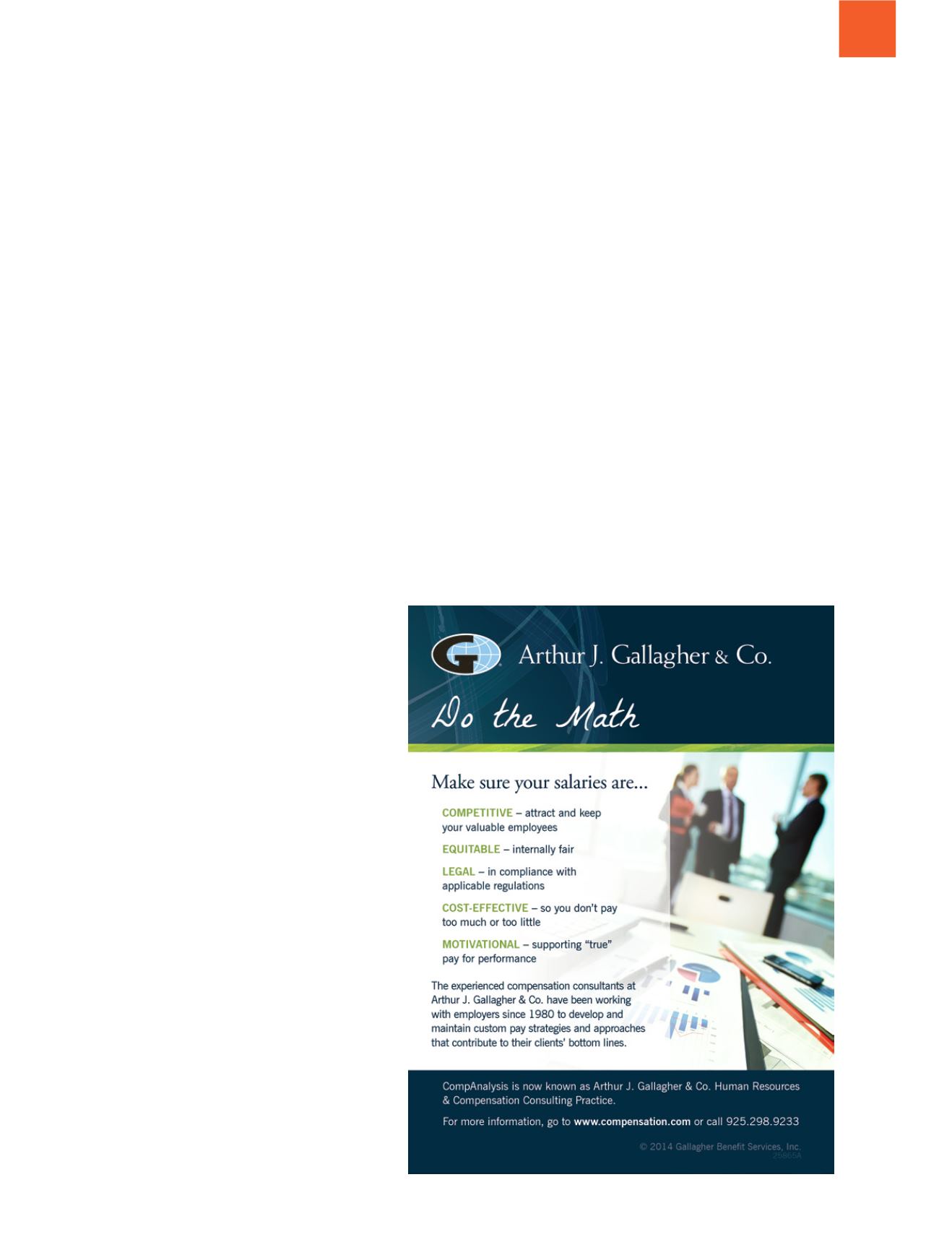
www.
nchra
.org
5
Workplace Strategy
still remains a driver in larger organizations,
though its importance has decreased. According
to Marty Anderson, EVP of Workplace Research
and Design at Ratekin Consulting, “saving money
is rarely the number one driver for implementing
a new workplace program. Increasing employee
engagement and business performance are more
often identified as the principle program drivers
for success.” We believe these trends are likely to
accelerate in the coming years as the contribution of
Workplace Strategy to organizational performance
becomes more widely recognized.
HOW WORKPLACE
STRATEGY IMPACTS
ORGANIZATIONAL
PERFORMANCE
Workplace Strategy can have a broad impact on
organizational performance as previously noted.
To illustrate its link to HR Planning, the following
focuses on the role of Workplace Strategy in talent
attraction and retention, performance enablement,
reinforcing culture and driving change.
ATTRACTION
AND RETENTION
The competition for talent continues to intensify and
is putting employees in the drivers seat. Workplace
flexibility in terms of work schedules, work
locations, a redefinition of the traditional office or
through enabling technology, is rising as a factor in
choosing employment. Indications are that today’s
employees place greater emphasis on choice than
ever before. A 2011 Cisco study of 3000 college
students and young professionals found that 66%
of respondents place a higher value on workplace
flexibility than salary. With other employment
factors being equal, the work environment and
flexibility take on more importance in the overall
employment decision.
WORKPLACE AS
PERFORMANCE ENABLER
Nearly all models of organization consider technical
systems, alongside people, structure and culture
as a factor in organizational performance. The work
environment, though historically not a significant
consideration, is a technical system that provides
the foundation for performance and can enable
or hinder it depending on its alignment with other
factors. Until recently, most organizations did little
to manage the work environment to its full potential,
opting to formulaically rollout standardized spaces
without rigorous consideration of how they support
a range of work patterns. On closer examination
this is counterintuitive given we differentiate most
other environments relative to activities. Consider
for instance the differentiated environments in our
communities and homes designed to support
various activities (e.g. kitchen, dining, living room).
Yet traditional workplaces attempt to accommodate
a wide range of work activities with a limited set of
spaces. Clearly our work environments as technical
systems can be brought into better alignment with
our actual work activities.
REINFORCING CULTURE
The work environment also plays an important
role in reinforcing culture as one of its most visible
and pervasive artifacts. Whether we like it or not,
our work environments say something about our
organizational culture. This connection is easy to
see in some cases, for instance the corner office
as a typical symbol of status in organizational
hierarchy. In most other instances the connection
between space and deeper elements of culture
is invisible on the surface. However close
examination will reveal the connection is extensive
and one in which influence flows in both directions.
This dynamic necessitates a more deliberate
approach to workplace development that targets
and reinforces behaviors, values, assumptions and
ultimately the employer’s brand.
LEADING CHANGE
With its influence on culture and organizational
performance the work environment can play a
significant role as a catalyst in change. Aligned
with key organizational development initiatives,
a new Workplace Strategy can go a long way in
signaling and driving change. The impact can
range from reinforcing certain behaviors (e.g.
communication) to driving transformative change,
as seen in transitions to Activity Based Working


